Project details
Skill
Cost
Estimated Time
It can be difficult to create a perfectly circular cut with a jigsaw. Luckily, there’s another easy way to do it using a router and a simple do-it-yourself circle jig.
By replacing the footplate of the router with a board and inserting a pivot point – I used a nail – a router can cut almost any size circle. Some woodworkers even prefer this method for cutting round dining tables.
If you’re going to be using this jig a lot and want to make it reusable, it may benefit you to make it out of a thin sheet of acrylic and drill a series of holes with standard spacing. I may do that in the future, but for testing out the process with these small projects, a piece of wood worked perfectly.
To get a feel for this process, I tested it on three small projects: a stool, a charcuterie board, and a round mirror frame. Read on to see how to make your own.
How to Make a Do-It-Yourself Circle Jig
A router circle jig is a simple yet effective tool that transforms your router into a precision circle-cutting machine. To create your router circle jig, you’ll need the following materials:
- A long, thin board approximately 1/2-inch thick
- Screws
- A drill and drill bits
- A router with a straight bit
- A small nail for the pivot point
- Sandpaper for finishing edges
Step 1: Remove the Router Footplate
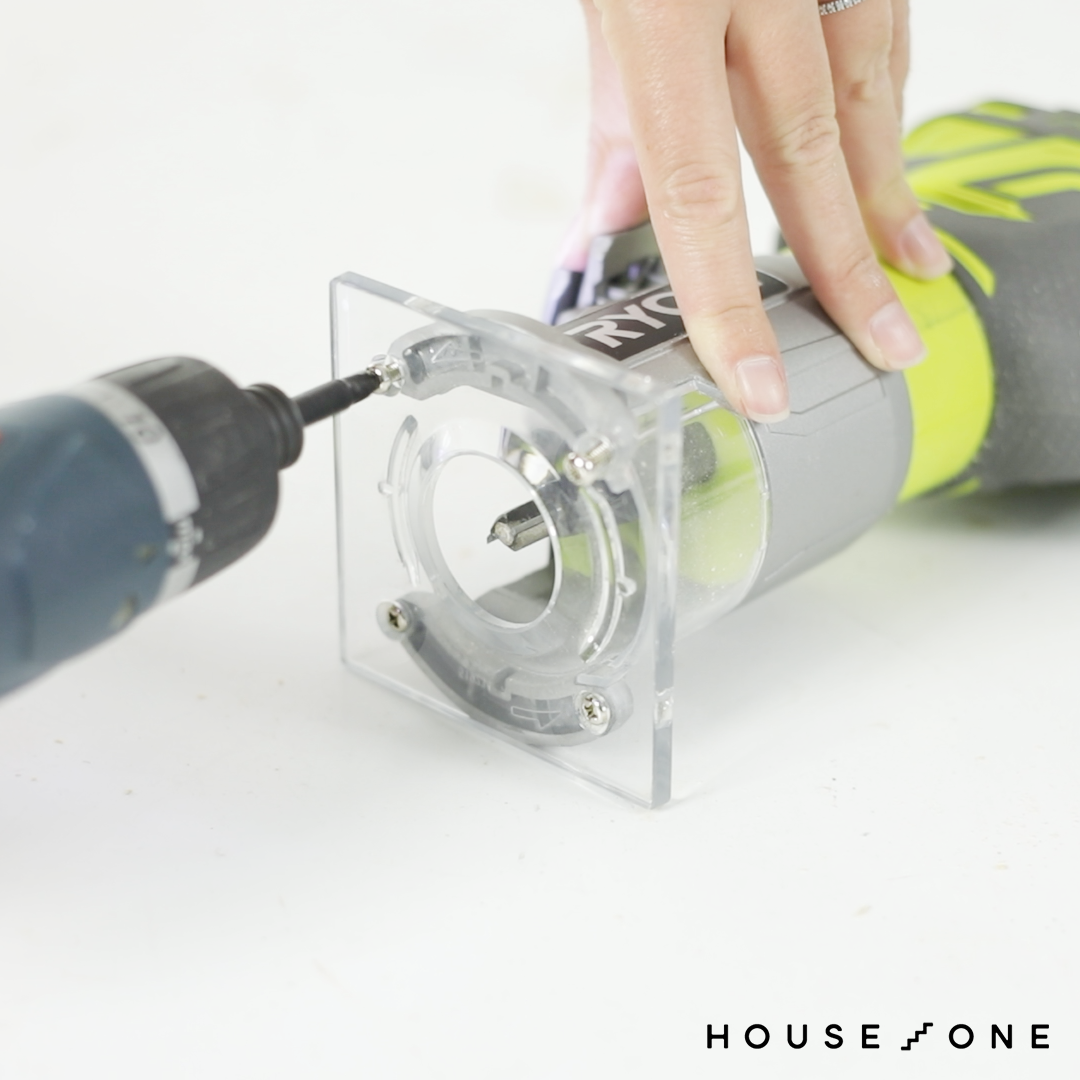
To get started, remove the battery or unplug the router. Unscrew the screws that hold the footplate on the router, and then remove the footplate.
Step 2: Trace the Footplate onto a Board
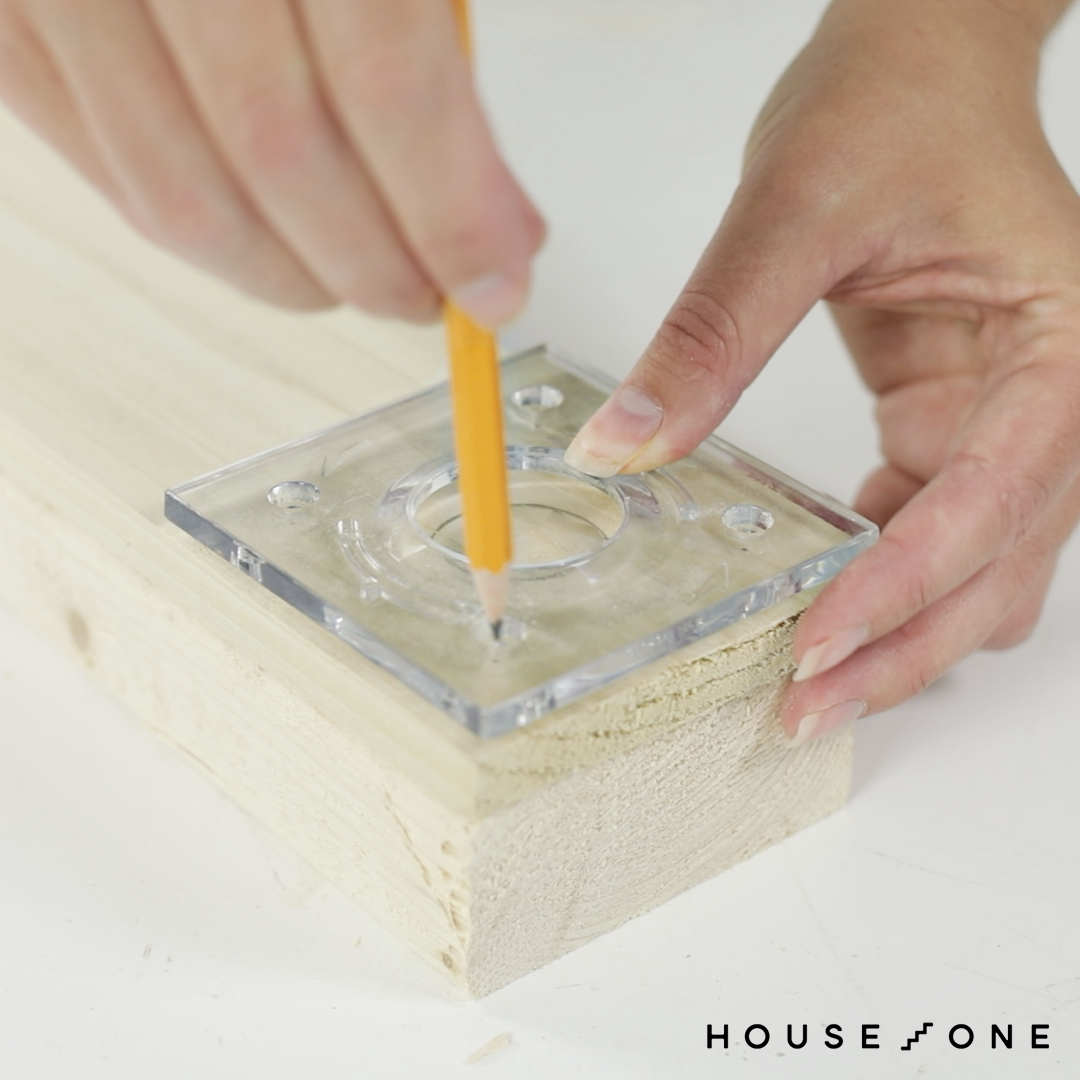
Trace the holes onto one end of a long, thin board like a 1/2-inch-thick board you can easily find at the home center.
Step 3: Drill the Holes
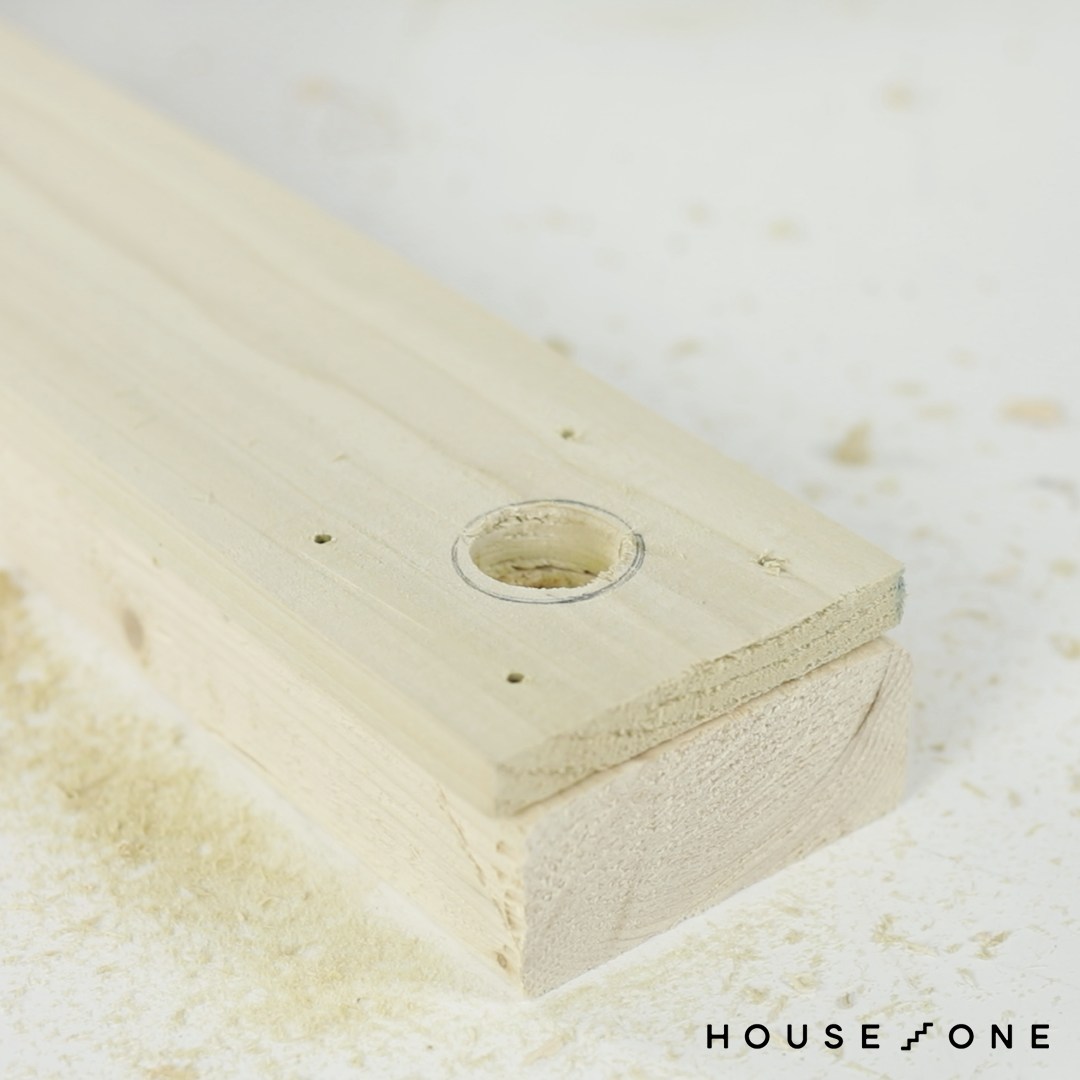
Drill holes for the screws and the opening for the router bit. Flip the board over and countersink the holes for the screws so they set flush with the bottom of the board.
Step 4: Attach the Board to the Router
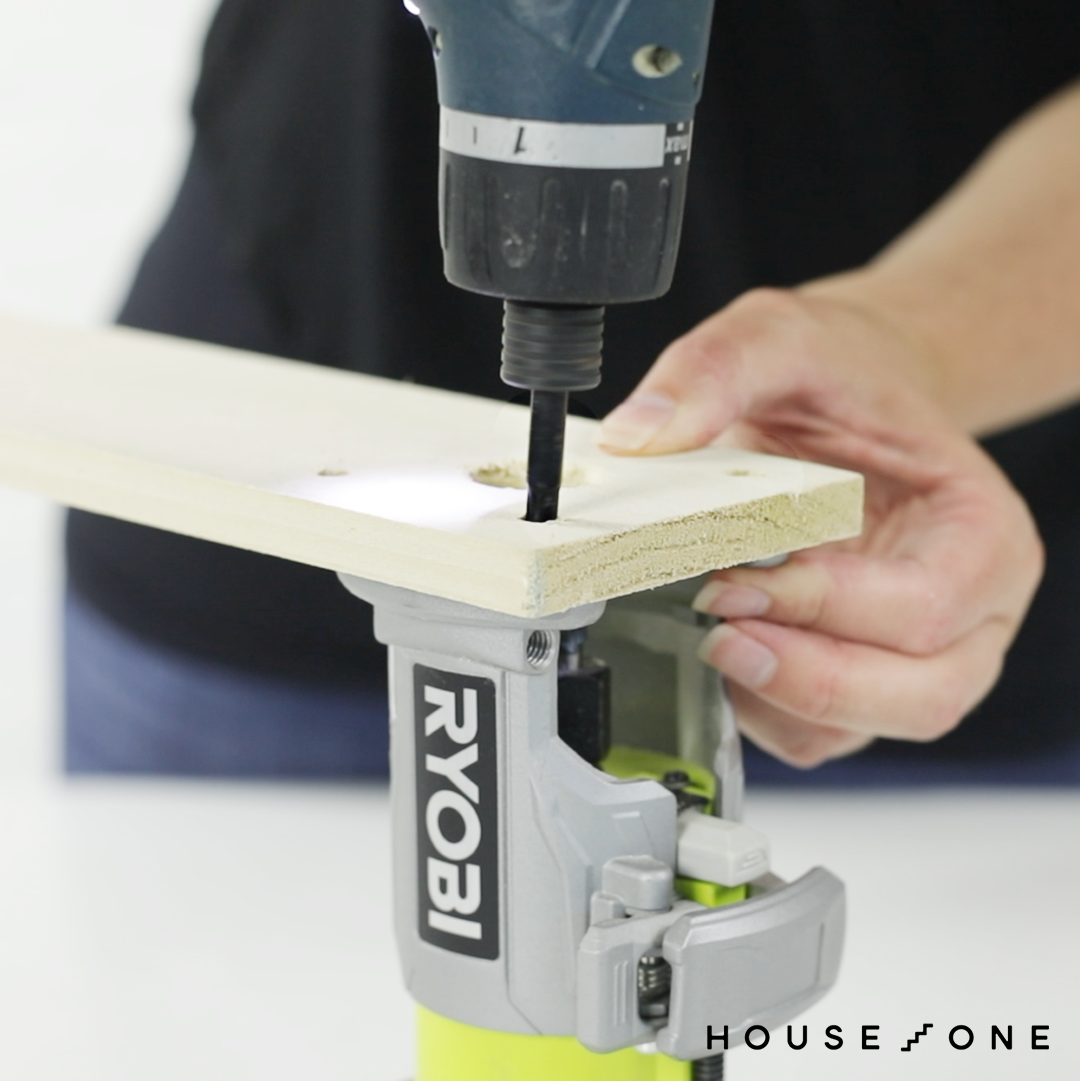
Using a drill/driver, attach the board to the router using the screws and holes used by the footplate.
Step 5: Adjust the router bit depth
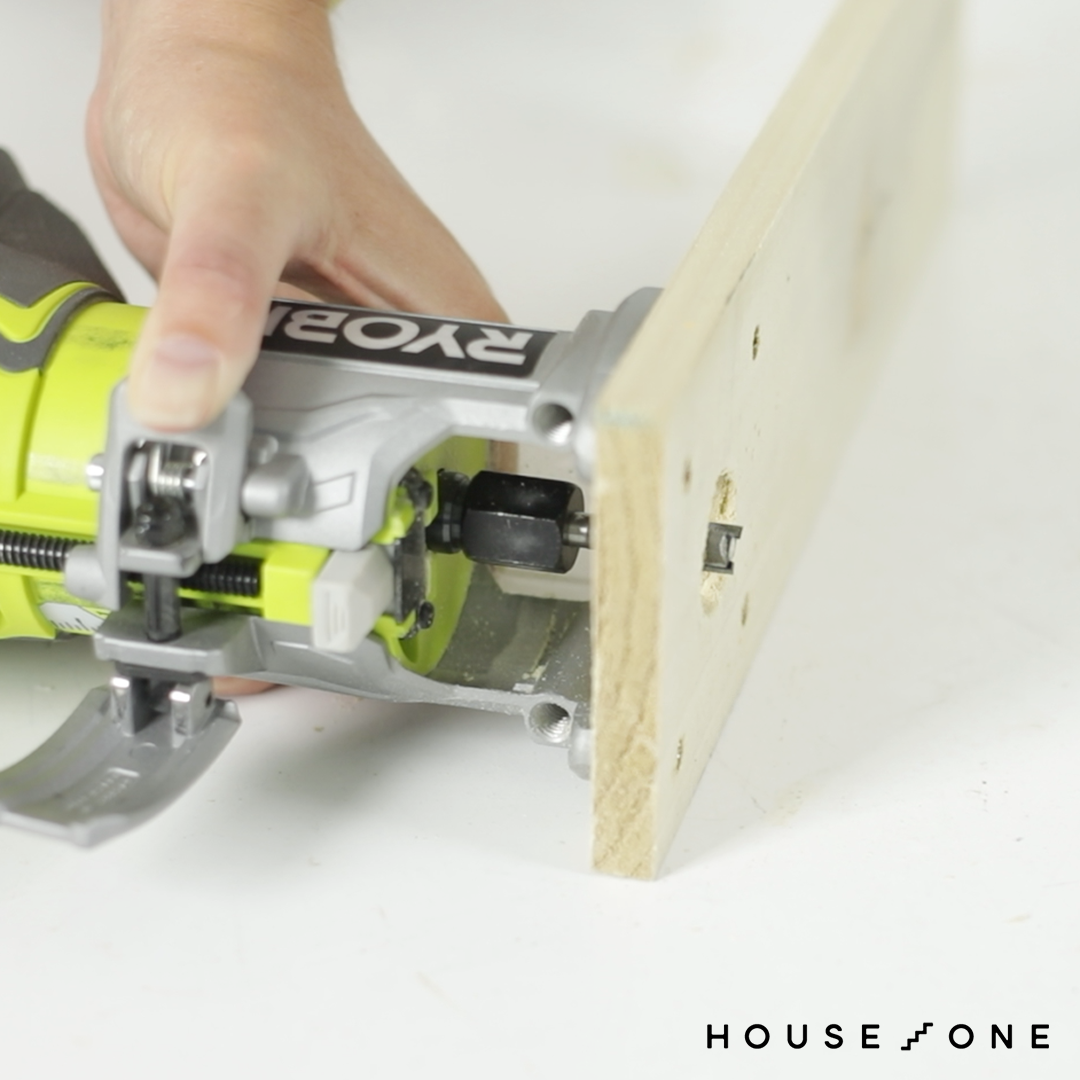
Fit the router with a straight bit. Set the depth of the first pass to less than 1/8-inch.
Step 6: Set the Pivot Point
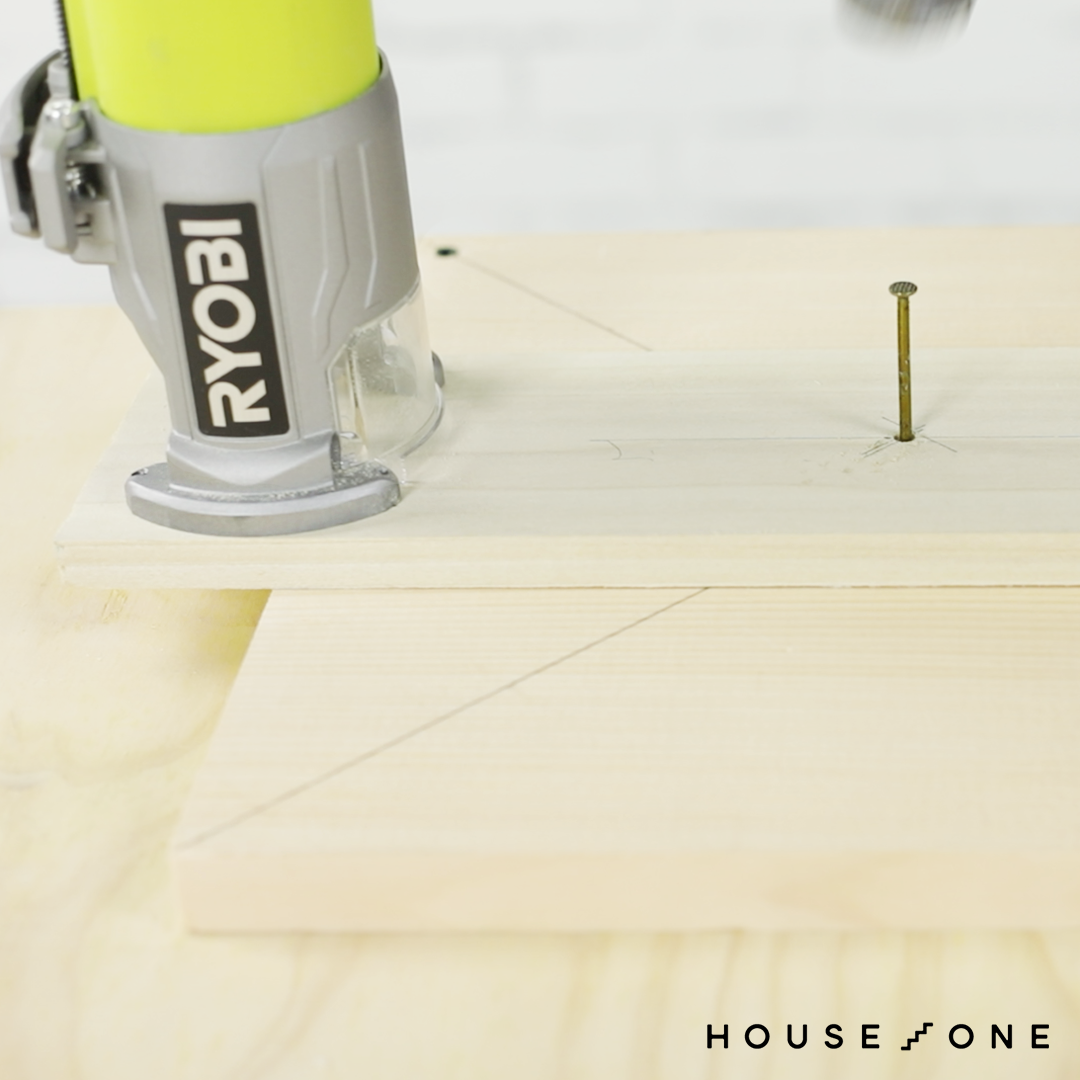
Mark and drill a small hole in the board for a pivot point at the desired radius of the circle.
Step 7: Make the Circular Cuts
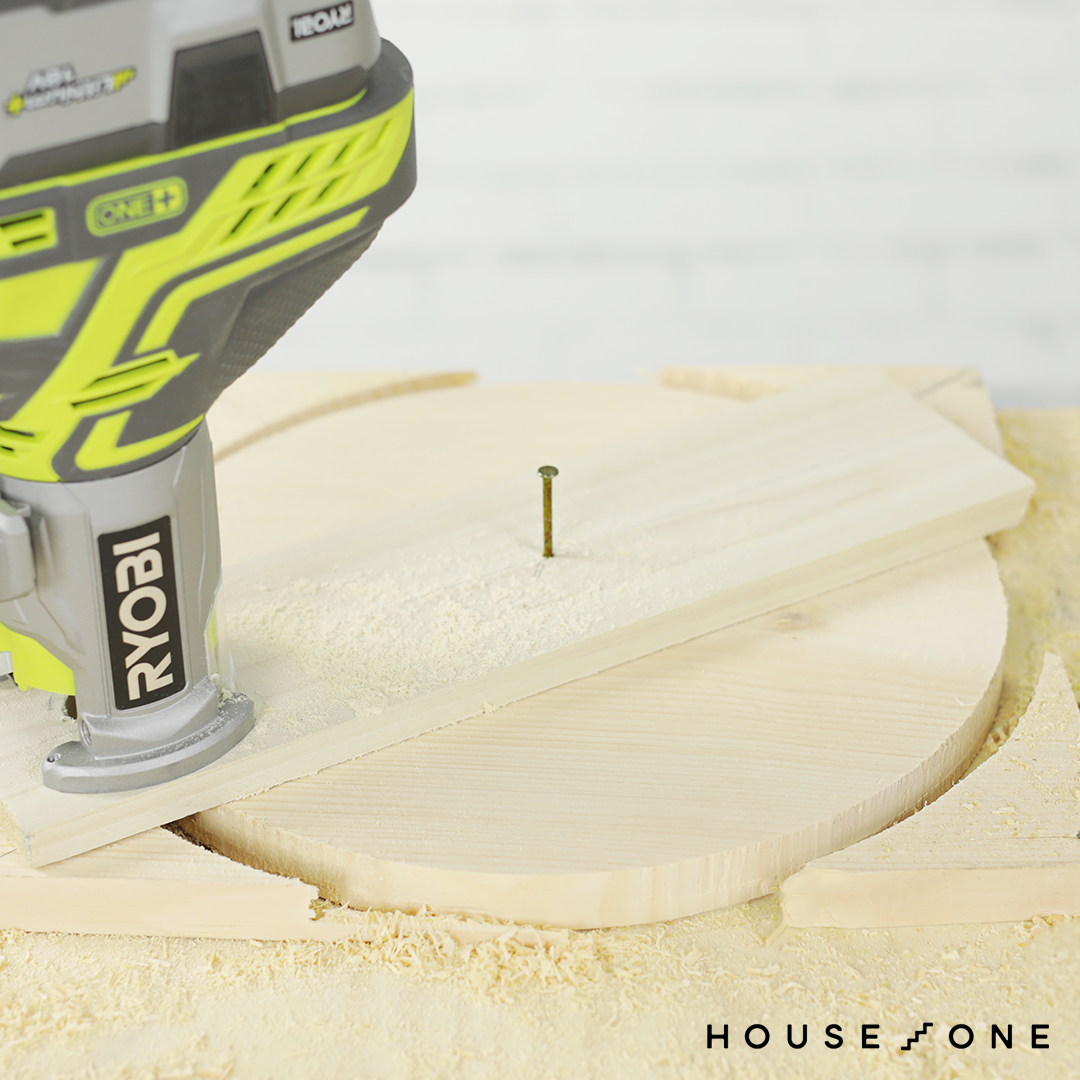
To get ready to make a cut, clamp a piece of plywood to the work surface. Lay the board on the plywood and screw it in place at the corners. On my first take, I only screwed in two corners but opted for all four corners on the next rounds.
Hover the router over the wood, and then plunge into the cut, pivoting the router around the circle one time. Shut off the router and vacuum the path clean. Set the depth of the router bit down another 1/8-inch and repeat the process until you cut through the full depth of the board and are left with a perfectly circular cut.
While it may seem like you’re making a lot of really shallow passes, I found my cut came out best using this method. Plus, if you’re using a battery-powered router, deeper cuts can cause the bit to stall or the groove to get clogged with sawdust.
Finishing the Stool Project With the Circle Jig
Now that you know how to make round cuts, you can use your new skill for a variety of home projects. First, I’ll walk you through how to make the stool.
Cut the Legs
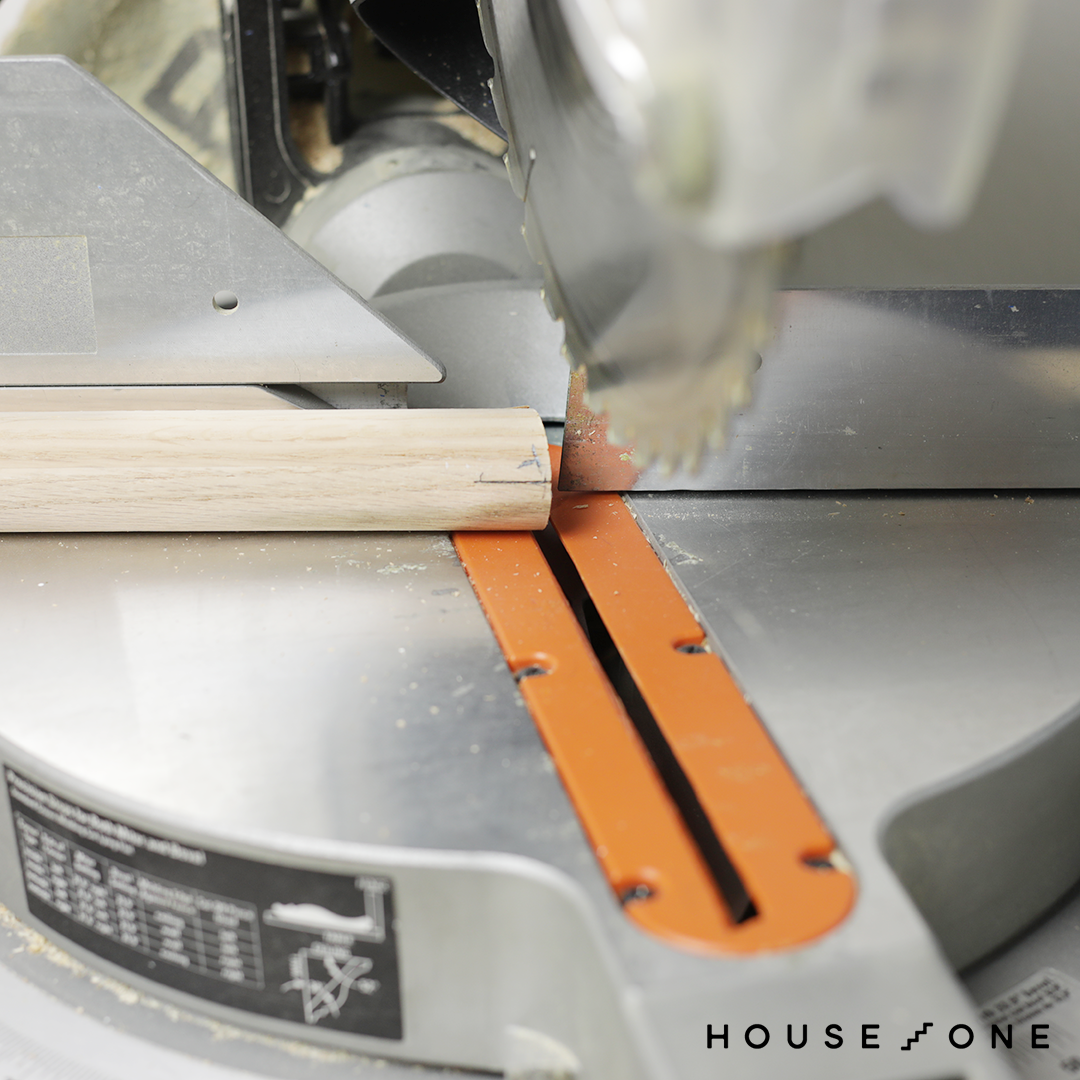
To make the stool, I repeated this cut on a second board to double the thickness of the seat. I then cut four legs at 15-degree angles on my miter saw. As a tip, I marked the front edge of the angled cut and used a stop block so I knew exactly where to line up the angle on the underside of the stool facing inward toward the center point.
Mark the Seat
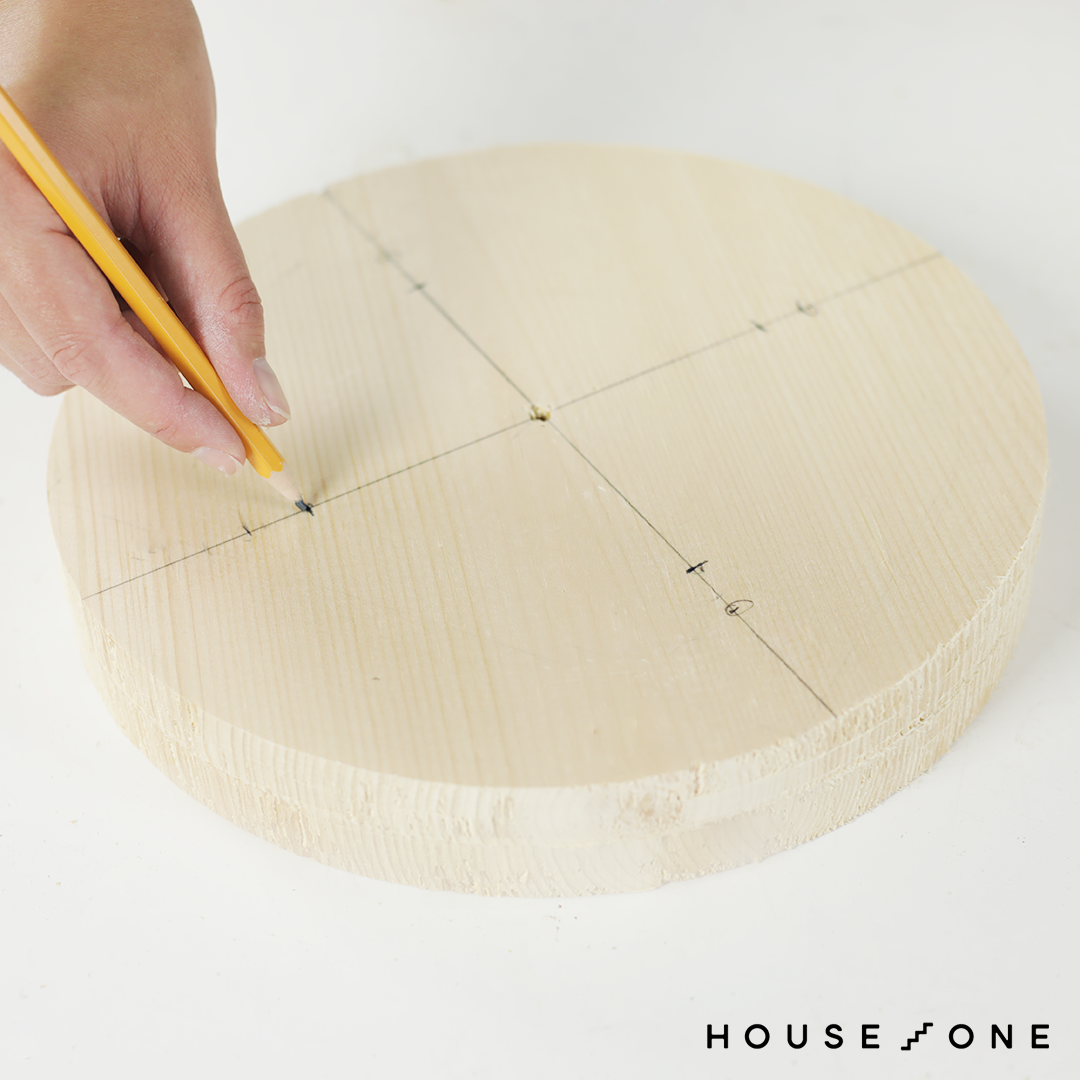
Pre-drilled holes in the stool seat at 1 3/4 inches from the edge using the angle of the leg as a guide, and into the center of each leg.
Attach the Legs
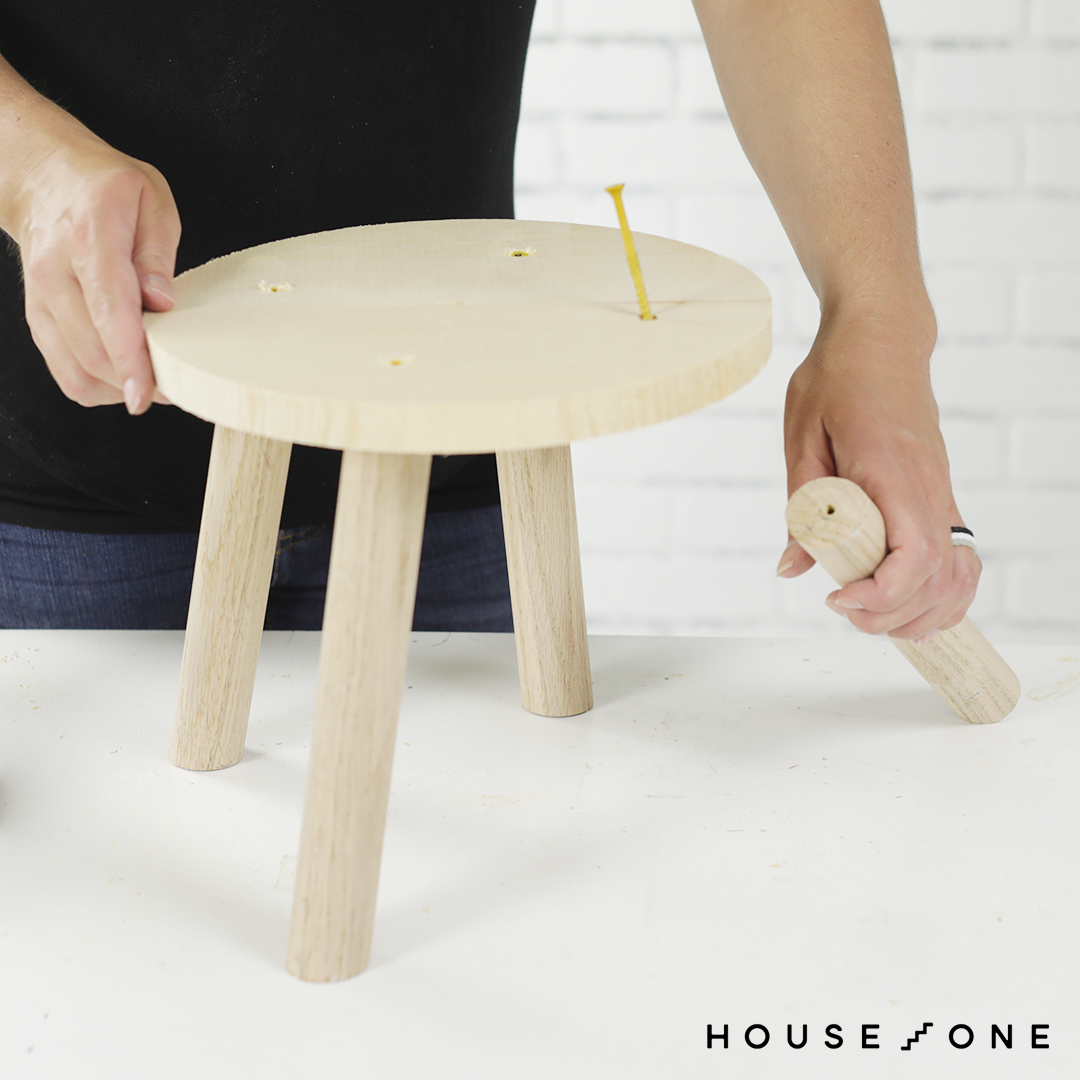
Apply a small amount of glue to the top of each leg, and then drive screws through the seat and into each leg.
Secure the Seat
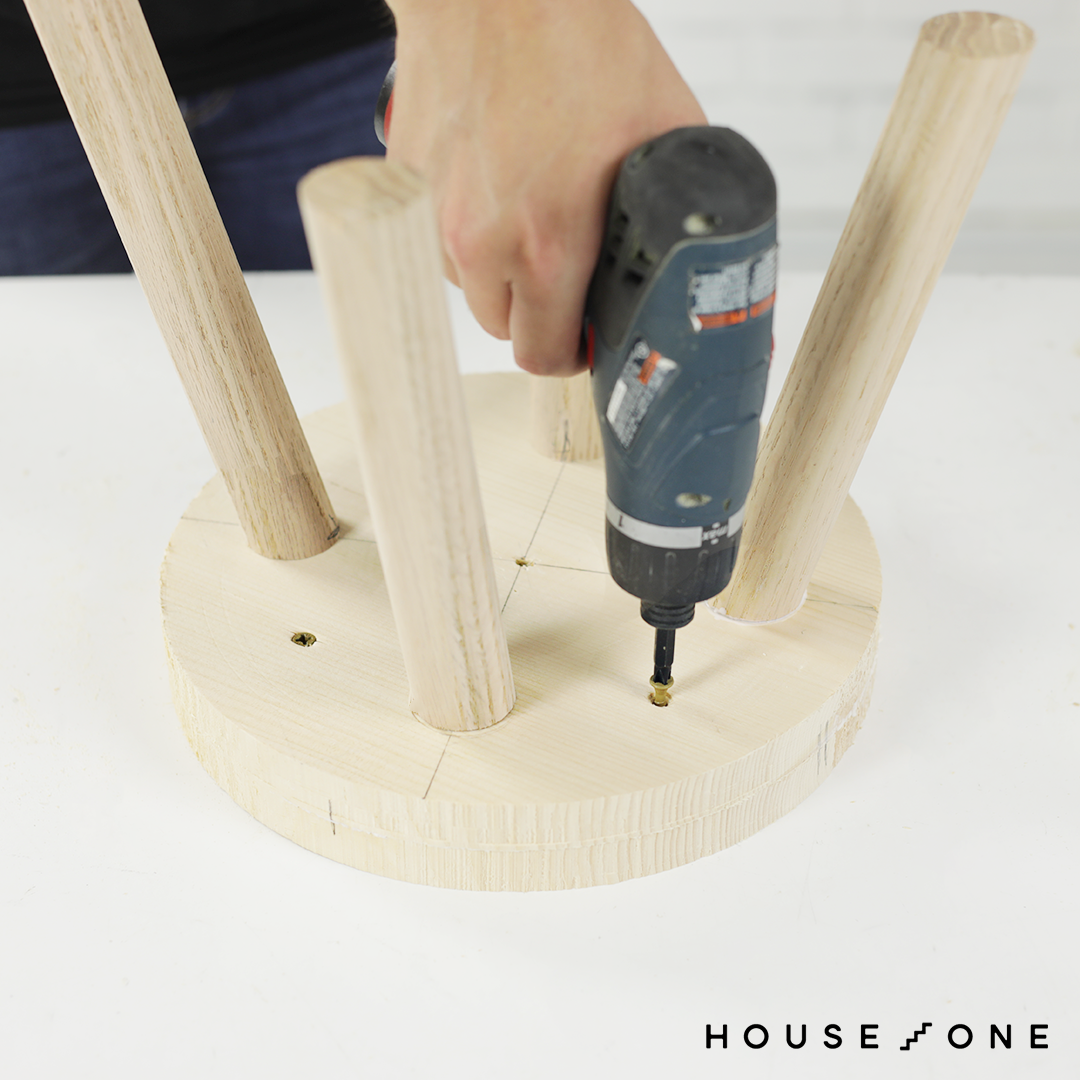
Lastly, apply wood glue to the surface of the seat and add the second layer to create a thicker top and hide the leg fasteners.
Finishing the Charcuterie Project With Your Circle Jig
Next, here’s how to use your circular pieces for a charcuterie board.
Assemble and Cut the Pieces
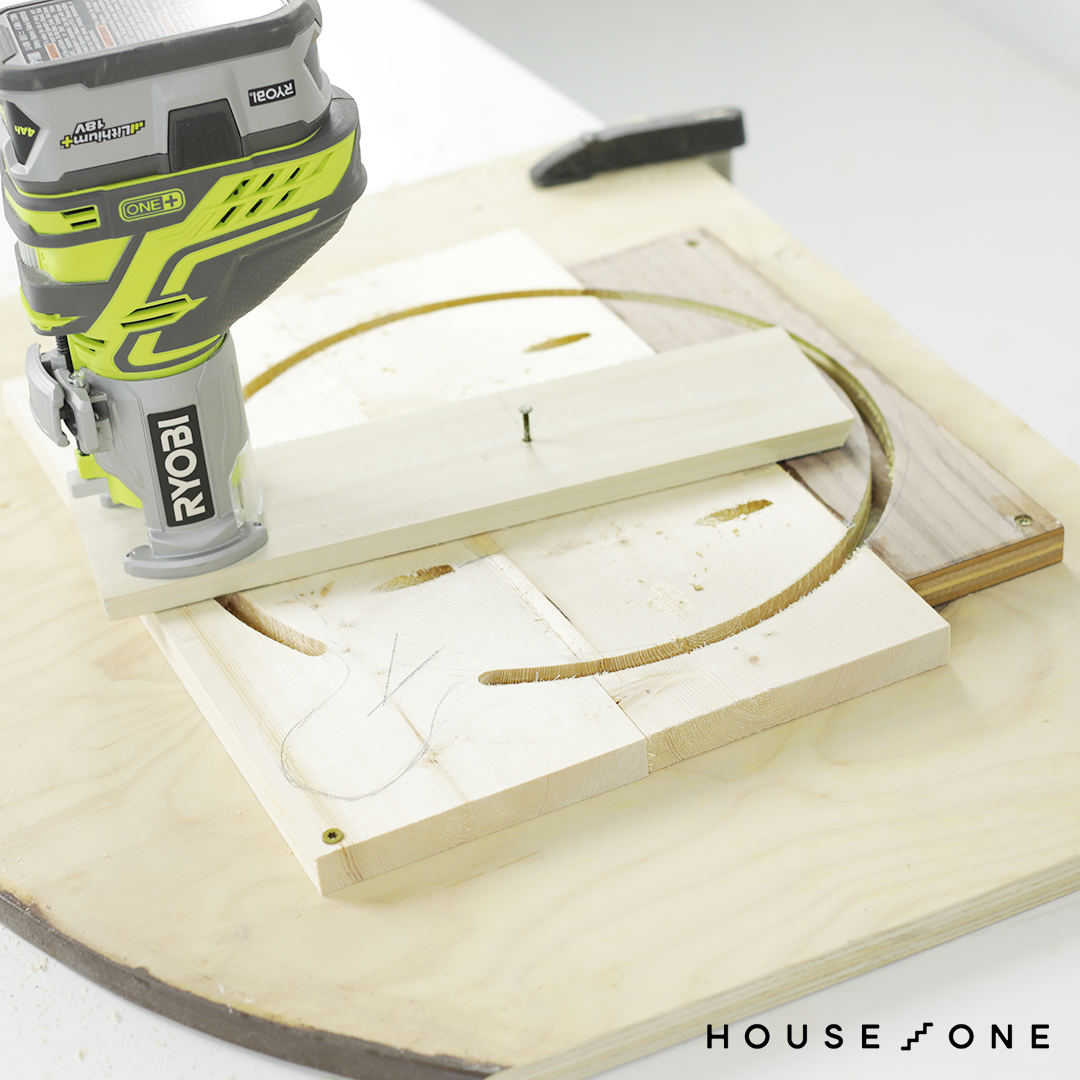
To make the charcuterie board, assemble two pine boards and one piece of walnut with glue and pocket hole screws. Mark the location and shape of the handle on the board. Hover the router and jig over the cut and mark the starting and stopping point on the board.
Cut the Handle
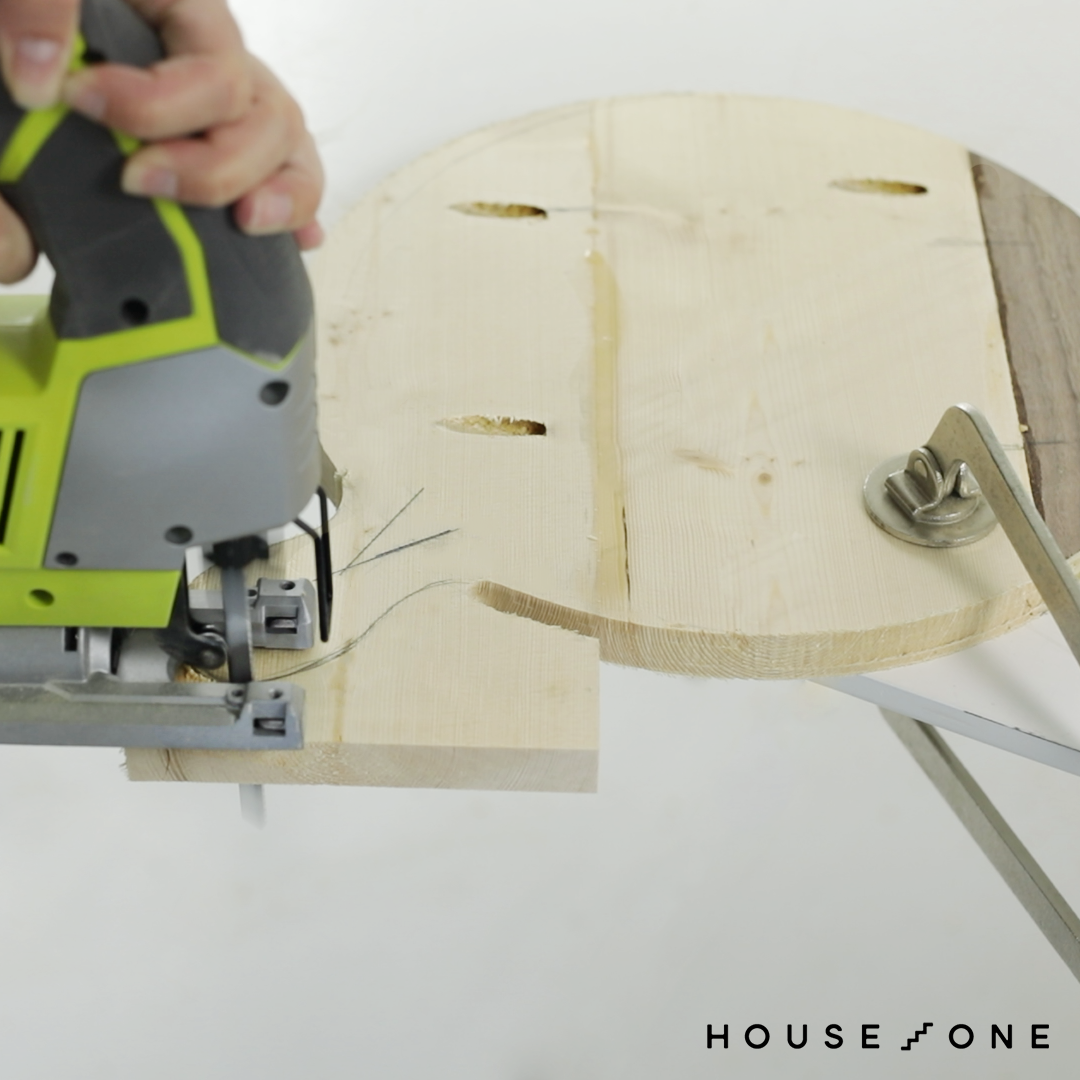
Once the circle cut is complete, cut the shape of the handle with a jigsaw, and drill a hole for a hanging strap.
Finishing the Frame Project With a Circle Jig
Finally, I’ll show you how I finished up a mirror frame. This project requires a cut to make the inside and outside edges of the frame, so you’ll need to screw the boards to the work surface at the corners and center.
Cut the Inside Edge
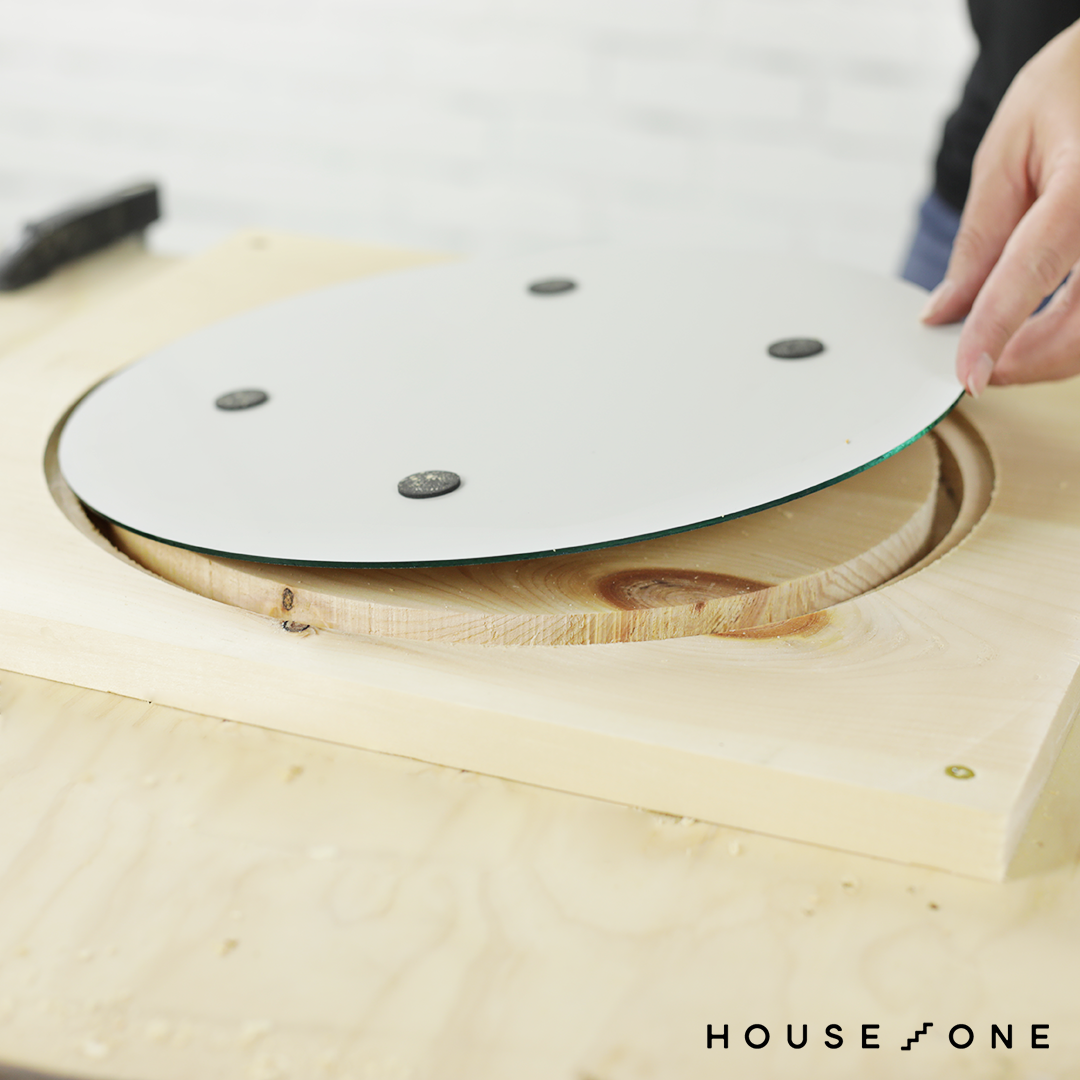
Make the first cut slightly smaller than the round mirror. Next, create a slightly wider cut that fits the size of the mirror, but at only a 1/8-inch depth to create a shoulder for the mirror to set into the frame without falling through.
Cut the Outside Edge
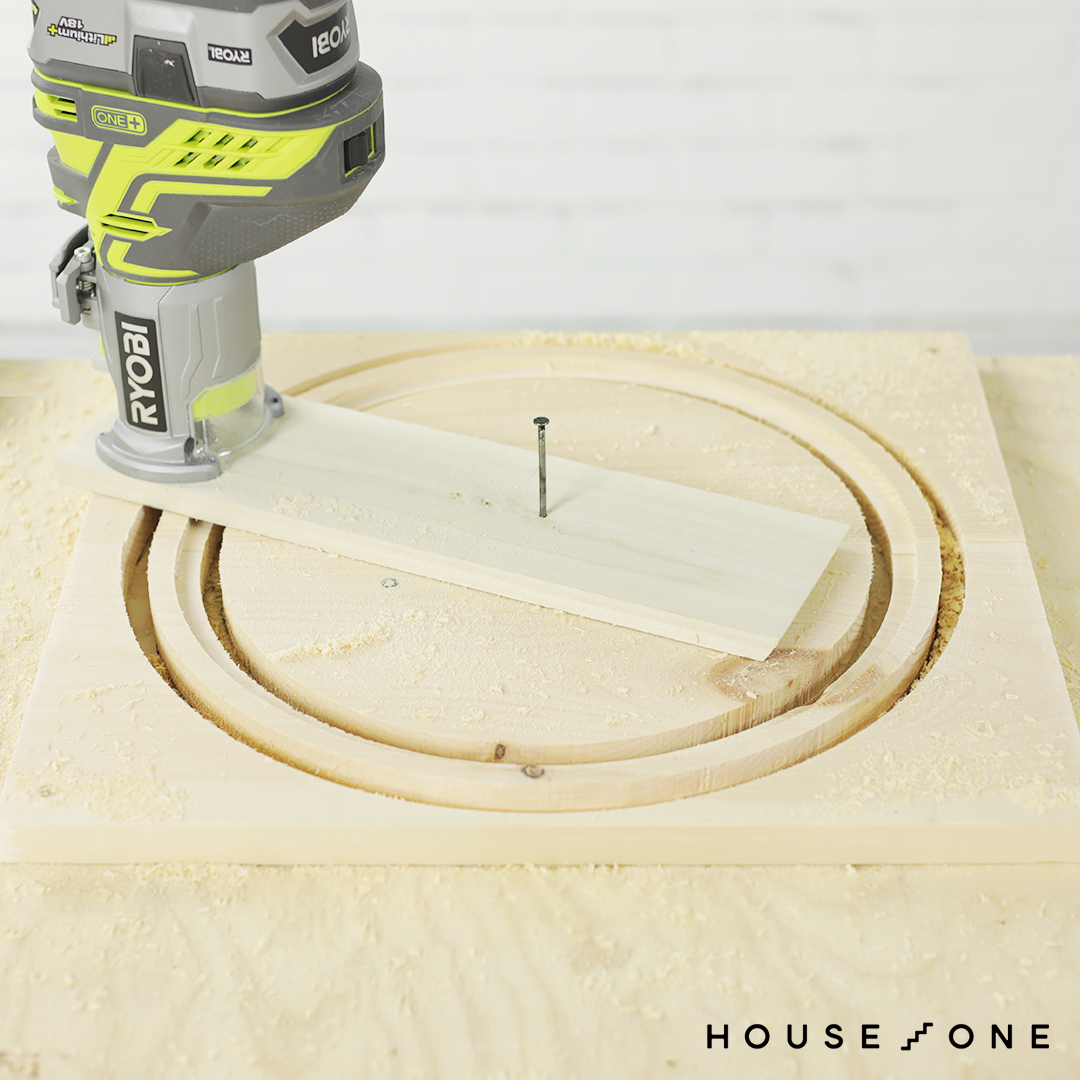
Lastly, cut the outside edge of the frame an inch and a quarter from the inside edge. Once the pieces are ready, apply glue to the ends and lightly clamp them together. Finish the frame and use glue to attach the mirror to the shoulder from the backside.
Additional Project Ideas With a Circle Jig
While the circle jig is highly effective for the projects mentioned above, its utility also extends to other creative endeavors. Here are a few more projects to explore:
Crafting Kids’ Toys
Design and create toys such as round wooden puzzles or stacking rings. The router circle jig’s precision provides safe and smooth edges, making it ideal for children’s toys.
Creating Artistic Wall Decor
Use the jig to craft circular wall art or decorations. From minimalist designs to intricate patterns, the router circle jig can help you achieve perfect circles every time.
Building Round Tabletops
For those looking to create custom furniture, the router circle jig can be used to build round tabletops. This project requires precision to promote a balanced and symmetrical table, which the jig effortlessly provides.
Tips for Success With a Circle Jig
For the best results when using your do-it-yourself router circle jig, keep these tips in mind:
- Make shallow passes: Multiple shallow cuts produce cleaner results than fewer deep cuts.
- Secure your workpiece: Properly clamp your material to prevent movement during cutting.
- Clear sawdust regularly: Vacuum between passes to maintain visibility and cut quality.
- Consider material thickness: Adjust your cutting strategy based on the thickness of your workpiece. Remember, use multiple shallow passes for the best results.
- Practice on scrap material: Familiarize yourself with the jig before working on your final project.
DIY Circle Jig Maintenance and Safety Tips
Maintaining your tools and following safety protocols can significantly enhance your woodworking experience. Here are some additional pointers.
Routine Maintenance
- Regularly inspect your router and circle jig for any wear or damage.
- Replace worn-out router bits for clean cuts.
- Clean the jig and router after each use to prevent the buildup of sawdust or debris.
Safety Precautions
- Always wear safety goggles and ear protection when using a router.
- Make sure the work area is well-lit and free from distractions.
- Keep hands and fingers safe from the router bit during operation.
My Conclusion
A do-it-yourself router circle jig is invaluable for woodworkers of all skill levels. It allows for precise, repeatable circular cuts that can elevate your projects. With just a few simple materials and basic woodworking skills, you can create this versatile jig and open up a world of new project possibilities.
